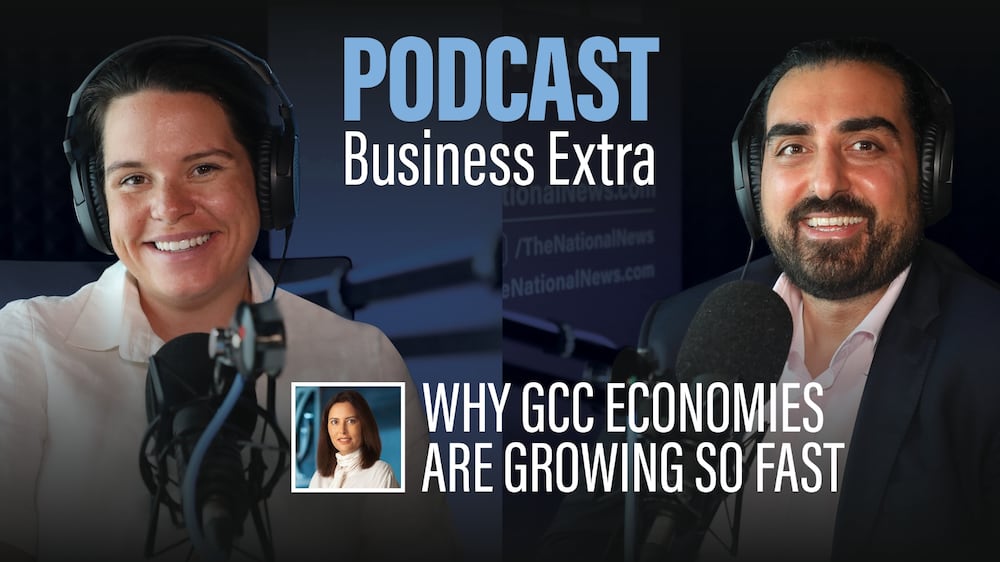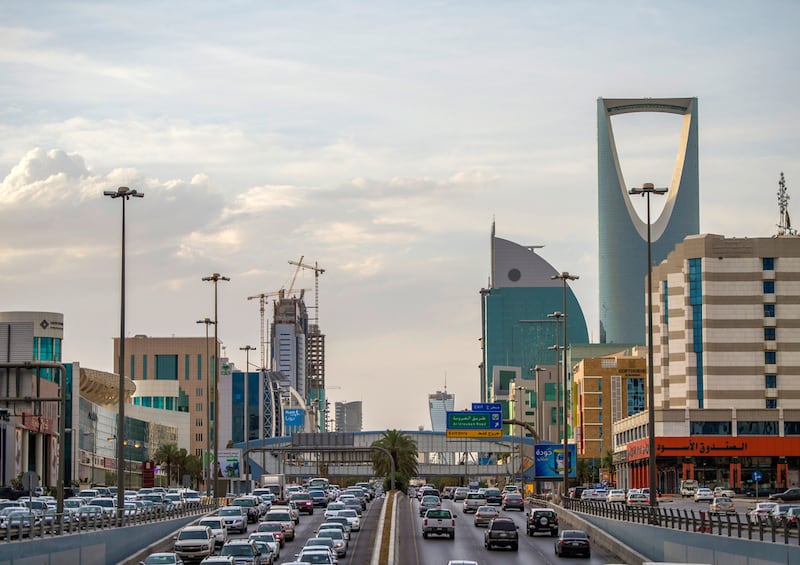S&P Global Ratings expects the GCC's four biggest banking markets in the UAE, Saudi Arabia, Kuwait and Qatar to "almost reach" pre-pandemic profitability levels by the end of 2022 on high oil prices, rising interest rate rates and new public projects.
In the second half of the year, higher net interest margins will likely offset the increased cost of risk. This will leave these regional banks with stronger full-year profits in 2022 than in 2021, the rating agency said in a report.
"In the second half, we forecast a more visible strengthening of regional banks' interest margins and a manageable pick-up in cost of risk, amid lingering effects from the Covid-19 pandemic via loans that benefited from support measures and were then restructured," S&P said.
"Combined, these factors will be a net positive for banks' earnings."
______________________
Watch: Why GCC economies are growing so fast
Why GCC economies are growing so fast

Last week, the central banks of the UAE, Saudi Arabia, Kuwait and Qatar raised their benchmark borrowing rates. This came after the US Federal Reserve raised its key interest rate for the fifth time this year to slash surging inflation and restore price stability.
The Fed increased the policy rate by 75 basis points (bps), its third consecutive three-quarters of a percentage point increase. GCC banking regulators followed the Fed's policy rate moves because their currencies are pegged to or aligned with the US dollar.
Brent, the benchmark for two thirds of the world's oil, slid 4.76 per cent to settle at $86.15 on Friday amid concerns about a potential global economic recession. West Texas Intermediate, the gauge that tracks US crude, dropped by 5.69 per cent to close at $78.74 a barrel.
However, oil prices are still up about 10 per cent year-to-date, following a 67 per cent rally in 2021.
In the UAE, higher interest rates and a lower cost of risk will continue to support the banking sector's profitability this year, S&P said.
Increases in non-performing loans (NPLs) will "remain contained" as the UAE economy continues to improve and corporate activity recovers from the impact of the Covid-19 pandemic, the report said.
The extension of some of the central bank's Covid-related targeted economic support scheme (TESS) measures to vulnerable sectors during second-half of 2022 will provide additional recovery time, it added.
S&P expects the cost of risk to reduce to between 100 to 110 bps in 2022-2023, compared with 116 bps in 2021.
"Banks' provisioning coverage of NPLs was adequate at 90 per cent in June 2022, supporting this cost of risk normalisation," it said.
UAE real estate prices are recovering, though they remain below the 2014 peak. Demand was uninterrupted in the first half of 2022, fuelled by higher oil prices that underpin the economic recovery and positive sentiment in the GCC.
S&P expects slower growth in mortgage transaction volumes due to further interest rate rises. However, this will not be disruptive given that only an estimated 20 to 25 per cent of transactions are mortgage based.
The UAE economy is set to expand at the fastest pace this year since 2011. It grew by 8.4 per cent in the first quarter of this year — significantly sharper than the 2.1 per cent pre-pandemic GDP level.
Saudi Arabia's financial performance has "almost" recovered to pre-Covid levels on stronger economic growth and higher interest rates, S&P said. Credit growth momentum will continue into the second half of 2022 due to stronger-than-expected performance in the mortgage portfolio, while corporate lending will start contributing to loan growth.
"The gradual increase in interest rates will continue to feed Saudi banks' margins, eventually pushing them up by year-end," S&P said.
The International Monetary Fund expects Saudi Arabia's economy to grow at the quickest pace in a decade and to be one of the world’s fastest-growing economies this year. The kingdom's economy is forecast to expand by 8.7 per cent this year after it expanded by 3.2 per cent in 2021, Jadwa Investment said.
Higher oil prices and the economic recovery have supported Kuwaiti banks' faster lending growth and lower cost of risk, S&P said.
For Qatari banks, S&P expects slower credit growth as the Fifa World Cup build-up in Qatar ends. The rating agency expects private sector credit growth of 5 per cent in 2022, less than half the average rate seen over the previous three years.
S&P forecasts global oil prices to average $85 per barrel next year, compared with $100 per barrel for the remainder of 2022.







